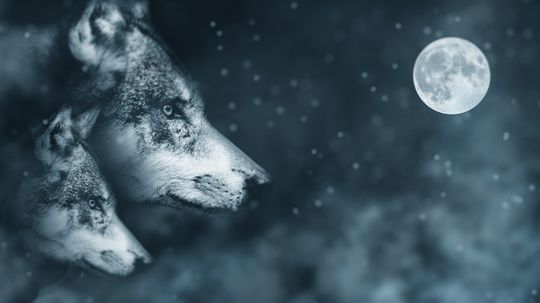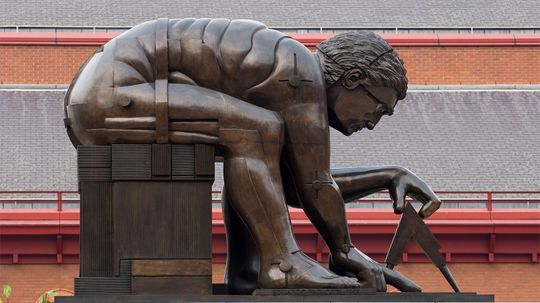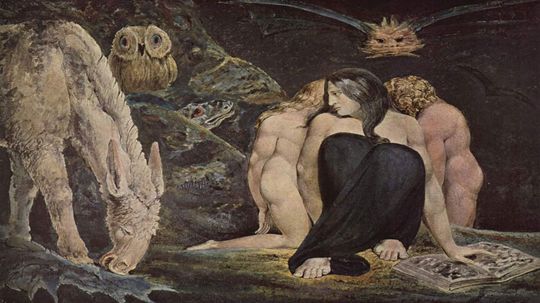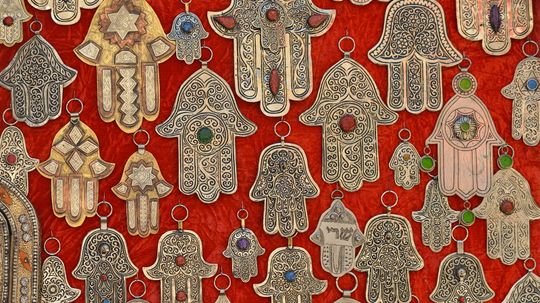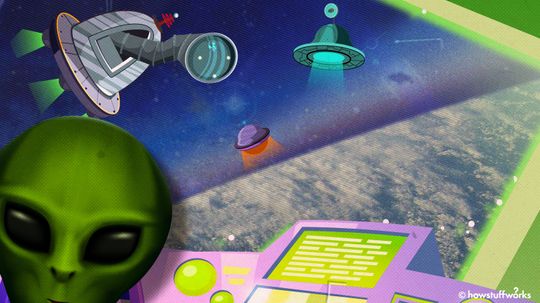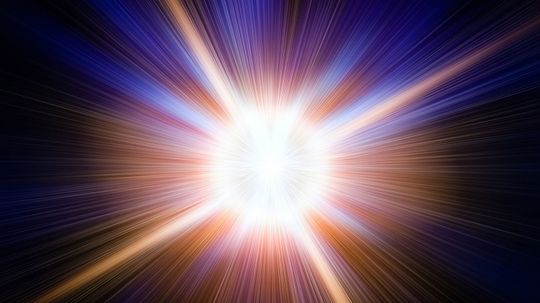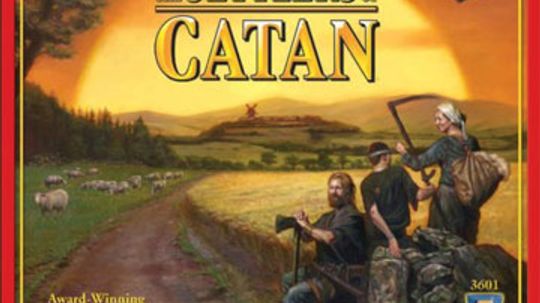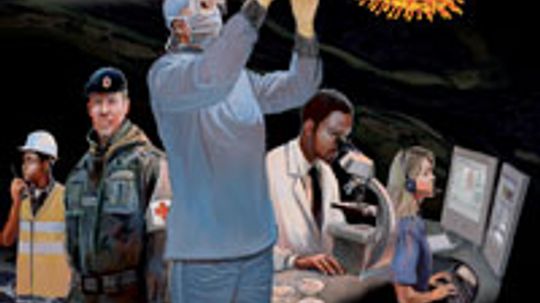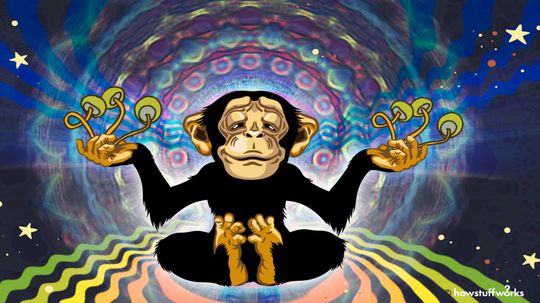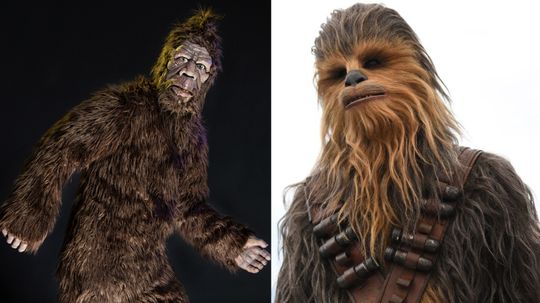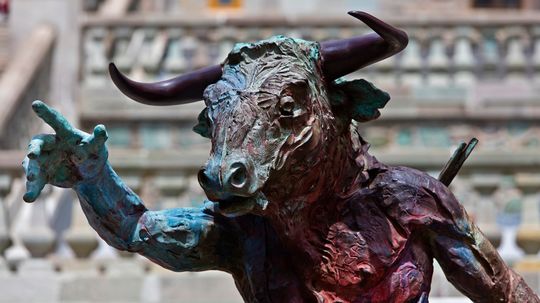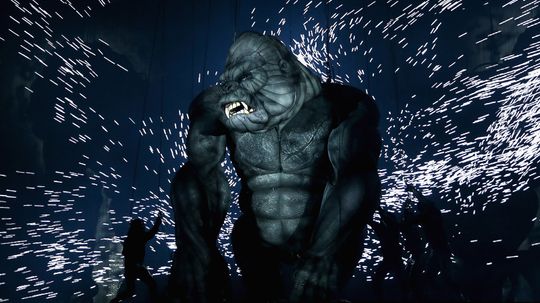Robert Lamb spent his childhood reading books and staring into the woods — first in Newfoundland, Canada, and then in rural Tennessee. There was also a long stretch in which he was terrified of alien abduction. He earned a degree in creative writing. He taught high school and then attended journalism school. He wrote for the smallest of small-town newspapers before finally becoming a full-time science writer and podcaster. He’s currently a contributing writer at HowStuffWorks and has co-hosted the science podcast Stuff to Blow Your Mind since its inception in 2010. In his spare time, he enjoys traveling with his wife Bonnie, discussing dinosaurs with his son Bastian and crafting the occasional work of fiction.
Recent Contributions
The Fibonacci sequence has been a numerical sequence for millennia. But what does it have to do with sunflower seeds or rabbits?
Skinwalkers人类和野兽之间的界限变得模糊。They're shape-shifting magical beings that belong to the Navajo spirit world. But how does one become a skinwalker?
Almost 300 years after his death, Sir Isaac Newton remains one of the most influential thinkers in history. What are some of his most enduring inventions?
Advertisement
Hekate was the ancient Greek goddess of magic, the moon, witchcraft, the night, necromancy and ghosts who stood at the crossroads between the worlds of the living and the dead.
Theseus was the mythical founder-hero of Athens and the slayer of the Poseidon-cursed man-bull known as the Minotaur. "Olympians" author George O'Connor reflects on Theseus, a difficult mythological hero to love.
The hamsa, a depiction of a human hand, often with a central eye motif, is a protective symbol meant to ward off evil.
If you're snacking on fig bars, make sure to check the nutritional content for wasps. Wasps risk their lives to provide enough figs to satisfy every fruit- and cake-related craving.
Advertisement
Is it possible that we are not alone in the universe, but are just like animals in a zoo to the aliens who are watching us?
We are a species of bridge builders. Since time began, humans have engineered structures to vault over obstacles with the help of logs, stone, steel and, of course, ingenuity. So, what keeps our bridges steadfast and strong?
What happens when scientific achievement goes awry? When synthetic life doesn't conform to human desires? One of the best monsters ever to terrorize fiction happens, that's what.
How often have you watched a weather forecaster point to a spiral-shaped cloudy mass with a sense of dread and fascination? What fuels these ferocious storms?
Advertisement
The global oil supply can't meet the demand forever. Will the last drops of oil lead to widespread anarchy, the end of globalization and the relentless exploitation of previously protected drilling sites?
So much of our cosmological history starts with the much-discussed Big Bang, but what led up to that cataclysmic moment? And did time even exist back then?
It opened the door for numerous technological advances, from nuclear power and nuclear medicine to the inner workings of the sun. It even appeared in the title of a Mariah Carey album. Really. Can you define those three key variables, too?
The island of Catan may be fictional, but the devoted fans this addictive board game generates are very real (and super strategic). Get sucked in, too, in How Settlers of Catan Works.
Advertisement
Blue disease is piling up in London and Atlanta while the scientist and the medic bicker over the next best steps for fighting the rising tide of infection. If that sounds like fun, you're going to love the board game Pandemic.
什么是人类的问题n consciousness and how it came to be in the human mind has raged forever between philosophers, religious scholars and scientists, but does the theory of the bicameral mind explain it?
Do we owe the emergence of language and self-reflection to the ancient and sustained consumption of psilocybin mushrooms?
Does everyone's favorite Wookiee call Bigfoot family?
Advertisement
Half man, half bull, this raging hybrid could be a perfect symbol of the oft-pondered dual nature of man.
"The 26th century" doesn't roll off the tongue as easily as "the 21st century" does. But that hasn't stopped us from imagining what our hometown planet will be like in a few hundred years. Any guesses?
The wall of water that struck northern Japan on March 11 claimed more than nearly 16,000 lives. While the human and cultural extents of this natural disaster are difficult to grasp, we can explain the physical properties that led to it.
ByRobert Valdes, Nathan Halabrin &Robert Lamb
Scientist Sebastian Alvarado talks about his new book exploring the scientific underpinnings of the Marvel Cinematic Universe.
Advertisement
Sure, he could pummel all his fellow beasts in a brawl, but could he stand the test of time?
Humans routinely break the sound barrier in supersonic aircraft. Could everyone's favorite hedgehog do it, too?


